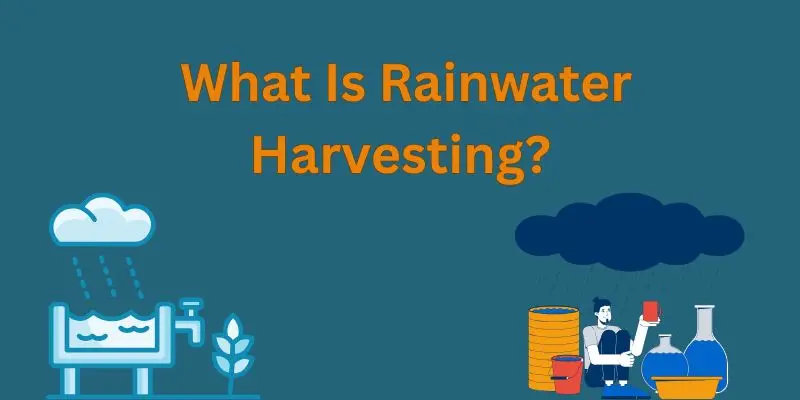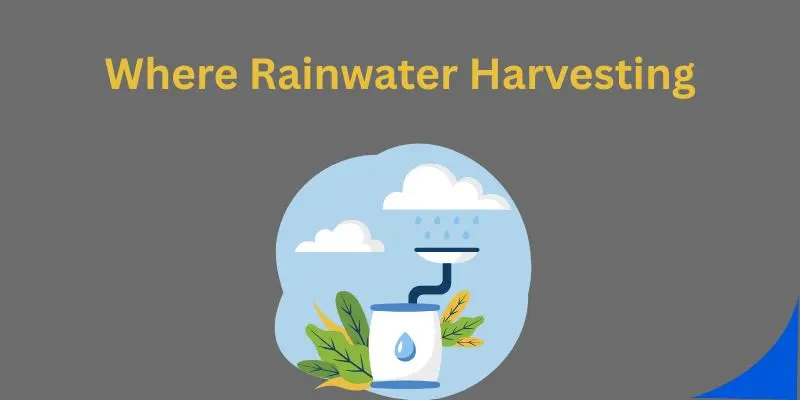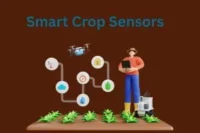Rainwater Harvesting: Saving Every Drop, Securing Every Future
Published: 22 May 2025
Over 60% of India’s agricultural land is rain-fed, yet nearly 78% of annual rainfall is lost as surface runoff due to poor water management. At the same time, groundwater levels across the country are depleting at an alarming rate, with over 250 districts labeled as water-stressed. Rainwater harvesting offers a practical and proven solution to this crisis by capturing and storing rainwater for future use. It not only helps reduce dependency on groundwater but also supports sustainable agriculture, recharges aquifers, and builds climate resilience in both urban and rural settings.
- So, guys, without wasting time, let’s jump into the article to learn Rainwater Harvesting: Saving Every Drop, Securing Every Future
What Is Rainwater Harvesting?
Rainwater harvesting is the process of collecting and storing rainwater that falls on rooftops, land surfaces, or other catchment areas for later use. It is a sustainable method of water conservation that helps reduce reliance on traditional water sources like groundwater and municipal supply.

- Rainwater harvesting involves collecting rainwater from catchment areas like roofs or open ground.
- The collected water is stored for future use in tanks, ponds, or underground systems.
- It is a sustainable and eco-friendly water conservation practice.
- Helps reduce pressure on conventional water sources.
Why Rainwater Harvesting Is More Urgent Than Ever
- Water tables are falling due to overuse and poor recharge.
- Rain patterns are unpredictable due to climate change.
- Municipal and rural water systems are under strain.
- Despite heavy rainfall in many regions, most of it is lost due to runoff.
- Emotional statement: “When water becomes rare, every saved drop becomes priceless.”
Benefits of Rainwater Harvesting
- Reduces dependence on external water sources (borewells, rivers).
- Saves money on water bills in homes, industries, and farms.
- Helps recharge groundwater and raise water tables.
- Minimizes soil erosion, waterlogging, and urban flooding.
- Provides water security in drought-prone regions.
Types of Rainwater Harvesting Systems
- Rooftop rainwater harvesting
- Surface runoff harvesting
- Recharge wells and pits
- Farm ponds and percolation tanks
- Check dams and bunds
How Rainwater Harvesting Works
- Water is collected from a catchment area (e.g., roof, pavement, land).
- It travels through a conveyance system (gutters, pipes, drains).
- The water is filtered to remove dust, leaves, and other contaminants.
- It is then stored in tanks or directed into the ground for recharge.
- The stored or recharged water is used as per local needs.
Where Rainwater Harvesting
- Urban homes and apartment complexes
- Schools, hospitals, and commercial buildings
- Agricultural lands and farms
- Factories and industrial premises
- Community spaces in both rural and urban areas
- Emotional note: “Where there is a surface, there is an opportunity to store life.”

Challenges and How to Overcome Them
- Initial Cost: Can be minimized through government subsidies and low-cost models.
- Maintenance: Requires regular cleaning and simple upkeep.
- Lack of Awareness: Can be addressed through education and demonstration.
- Urban Limitations: Solved by modular or underground storage systems.
- Emotional angle: “Every challenge solved today ensures water security tomorrow.”
Government Policies and Support
- Mention state and national schemes encouraging rainwater harvesting.
- Include building codes that mandate water harvesting in urban areas.
- Suggest where to find resources or apply for financial support
FAQs about Rainwater Harvesting
Here are some of the most frequently asked questions about the advantages and disadvantages of the Internet.
No, it’s not limited to rooftops. Rainwater can also be collected from open land, roads, or any surface that receives rainfall.
Rooftop harvesting collects rain from building roofs into tanks or recharge pits. Surface runoff harvesting captures rain that flows over land or streets, often directed into ponds or recharge wells.
Yes, some systems don’t store water but instead let it soak into the ground to recharge underground aquifers. These are called recharge systems, like soak pits or percolation tanks.
No, different systems work better in different places. Rooftop systems are great for homes, while farm ponds or check dams are better suited for agricultural or rural areas.
Not always, but filters are important when water is stored for later use, especially in rooftop systems. For recharge systems, simple filters are used to avoid clogging.
Conclusion
The content explains rainwater harvesting as a vital method for capturing and storing rain to combat water scarcity, recharge groundwater, and reduce dependence on external sources. It outlines various systems such as rooftop harvesting, surface runoff collection, recharge pits, and farm ponds—each suited to different needs and environments. Understanding these types is essential for choosing the right method based on location, purpose, and available space. By adopting the appropriate system, individuals and communities can manage water more sustainably and protect future resources.

- Be Respectful
- Stay Relevant
- Stay Positive
- True Feedback
- Encourage Discussion
- Avoid Spamming
- No Fake News
- Don't Copy-Paste
- No Personal Attacks

- Be Respectful
- Stay Relevant
- Stay Positive
- True Feedback
- Encourage Discussion
- Avoid Spamming
- No Fake News
- Don't Copy-Paste
- No Personal Attacks





